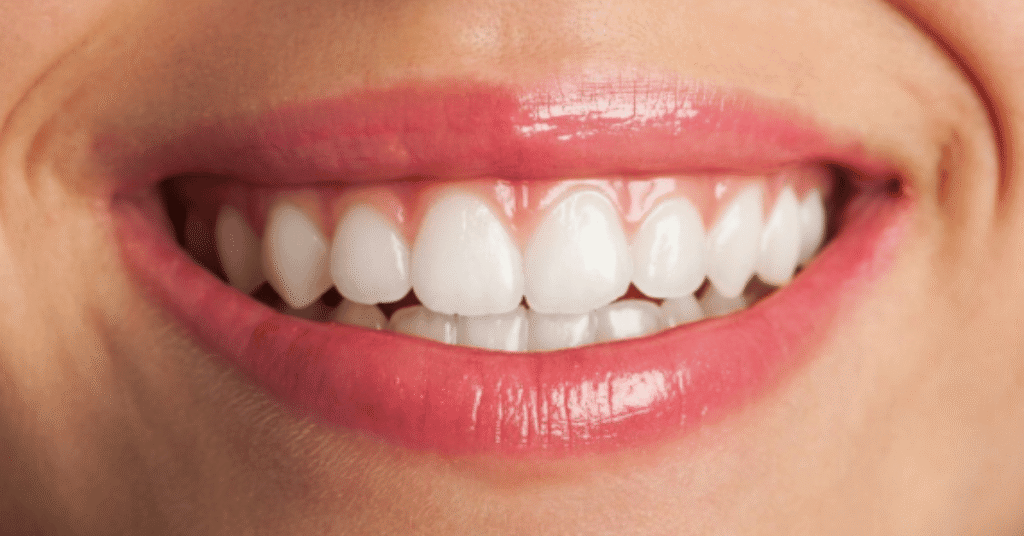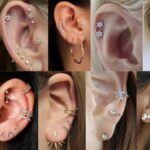In today’s age of visual perfection and increasing cosmetic awareness, porcelain veneers have emerged as a trusted, enduring solution for individuals seeking aesthetic dental improvement. If you’re wondering what porcelain veneer are, how they work, whether they’re right for you, and what you can expect from the procedure, you’ve landed in the right place. This comprehensive article explains every aspect of porcelain veneers—from candidacy and costs to application, risks, alternatives, and aftercare. It is designed to provide you with clear, accurate, and current information so you can make an informed decision with confidence.
Introduction to Porcelain Veneers
Porcelain veneers are thin, custom-designed shells made of medical-grade ceramic that are bonded to the front surface of teeth. Their primary function is cosmetic—to enhance the shape, color, size, and overall appearance of natural teeth. Invented in the 1920s by a Hollywood dentist for actors on film sets, the technology behind veneers has since evolved into one of the most trusted tools in cosmetic dentistry.
Today, porcelain veneers offer patients a minimally invasive yet transformational option to address a wide range of dental imperfections, from discoloration and chips to misalignments and gaps. They are now recognized not just as a cosmetic upgrade, but often as a way to renew confidence and facial harmony.
Understanding the Composition and Design
Porcelain veneers are fabricated from high-grade ceramic materials, typically feldspathic porcelain or lithium disilicate (e.g., E.max). These materials are chosen for their strength, translucency, and resemblance to natural enamel.
Here’s what makes porcelain veneers structurally and aesthetically superior:
- Natural Translucency mimics the light-reflecting properties of real teeth
- Stain Resistance due to their non-porous surface
- Custom Shading allows precise color matching
- Durable Bonding Agents ensure long-term adherence to the tooth surface
Each veneer is individually crafted to match the shape and alignment of a patient’s teeth and smile line. Unlike composite bonding, which is done chairside, porcelain veneers are usually crafted in a dental lab after an impression or 3D scan.
Who Is a Good Candidate?
Porcelain veneers are best suited for individuals with healthy gums and teeth, who want to correct specific cosmetic concerns. You may be an ideal candidate if you suffer from:
- Discolored or deeply stained teeth
- Chipped, broken, or worn-down teeth
- Misaligned, uneven, or irregularly shaped teeth
- Gaps between teeth
- Teeth that appear too short or too narrow
However, they are not recommended for individuals with active gum disease, tooth decay, or those who grind their teeth excessively (bruxism), unless these conditions are first treated.
The Porcelain Veneer Procedure
The veneer process typically involves three stages: consultation, preparation, and bonding. Here’s a breakdown of what to expect at each step:
1. Consultation and Assessment
During your initial appointment, your dentist evaluates your oral health and aesthetic goals. Diagnostic tools such as X-rays, photographs, and 3D scans are often used to determine suitability.
2. Tooth Preparation
A thin layer (0.3 to 0.7 mm) of enamel is removed from the surface of the tooth to make space for the veneer. This step is essential for proper fit and natural look.
3. Impression and Temporary Veneer
An impression or digital scan is sent to a lab where custom veneers are fabricated. Meanwhile, temporary veneers are applied to protect your teeth.
4. Bonding
Once the veneers are ready, they are bonded using strong dental cement. The dentist ensures proper alignment and bite before final polishing.
5. Final Evaluation
A follow-up visit is often scheduled after a week or two to monitor comfort, alignment, and bite.
Cost Overview and Factors That Influence It
The price of porcelain veneers varies significantly based on a range of factors including geography, dentist expertise, and lab quality.
Average cost per tooth in USD:
Region | Cost per Veneer
United States | $1,000 – $2,500
Europe | €800 – €2,000
Asia | $500 – $1,200
Middle East | $700 – $1,500
Influential Cost Factors
- Number of veneers required
- Dentist’s credentials and location
- Type of porcelain used
- Technological tools (CAD/CAM vs. traditional)
- Additional treatments (e.g., whitening, gum contouring)
Many dental offices offer financing options or bundle deals, making veneers more accessible to a broader demographic.
Comparison with Other Cosmetic Dental Procedures
How do veneers stack up against similar treatments?
Treatment | Durability | Invasiveness | Cost | Natural Look
Dental Bonding | 3–7 years | Low | Lower | Moderate
Porcelain Veneers | 10–20 years | Moderate | High | Excellent
Teeth Whitening | 1–3 years | None | Moderate | Natural
Crowns | 10–20 years | High | Higher | Good
Porcelain veneers often strike the best balance between aesthetics, longevity, and function, making them a top choice for comprehensive smile makeovers.
Common Myths vs. Reality
Myth 1: Veneers ruin your natural teeth
Reality: Only a small layer of enamel is removed, and the structure underneath remains intact.
Myth 2: They look fake
Reality: Modern veneers are virtually indistinguishable from real teeth due to advanced shading and translucency.
Myth 3: Veneers are only for the rich
Reality: While once exclusive, veneers have become more affordable and available with financing.
Myth 4: Veneers are painful
Reality: Most patients report minimal discomfort, similar to getting a filling.
Risks and Limitations
Like any medical procedure, veneers come with potential risks:
- Irreversibility—once enamel is removed, it cannot be replaced
- Increased tooth sensitivity
- Risk of chipping or breakage
- Not suitable for people with weak enamel or gum disease
- Potential mismatch in color with surrounding natural teeth over time
Proper consultation and planning reduce most of these risks.
Benefits Beyond Aesthetics
Porcelain veneers don’t just beautify your smile—they enhance function and boost emotional health:
- Improved self-esteem and confidence
- Better oral hygiene due to smoother surfaces
- Speech improvement for those with gapped or misaligned teeth
- Lower risk of staining compared to natural enamel
- Protection for worn or weak tooth surfaces
In many cases, veneers also contribute to improved bite alignment, making them functional restorations as well.
Porcelain Veneer for Specific Conditions
Veneers can serve specific therapeutic or aesthetic purposes, such as:
- Masking fluorosis stains
- Covering tetracycline discoloration
- Aligning mild orthodontic irregularities
- Addressing enamel hypoplasia or erosion
- Creating uniformity in peg laterals or underdeveloped teeth
Veneers can even be used as part of a broader full-mouth reconstruction when paired with other procedures like crowns and implants.
Care and Maintenance
While veneers are durable, proper care is critical to extending their lifespan:
- Brush twice daily with non-abrasive toothpaste
- Floss gently to prevent gum inflammation
- Avoid biting into hard items like ice, nuts, or pens
- Wear a nightguard if you grind your teeth
- Visit your dentist regularly for cleanings and checkups
Contrary to common belief, veneers don’t require “special” care, just consistent oral hygiene.
Longevity and Replacement
With good oral hygiene and routine dental visits, porcelain veneer can last between 10 to 20 years. Over time, they may require replacement due to:
- Natural wear and tear
- Changes in gum tissue or bone structure
- Color mismatch with natural teeth
- Damage from trauma or habits
Replacement involves removing the old veneer and fitting a new one—often simpler and quicker than the initial procedure.
Psychological and Social Impact
Numerous studies and patient testimonials highlight the transformative power of veneers on emotional well-being. People who undergo cosmetic dental work often report:
- Greater willingness to smile in public
- Increased job opportunities and success in interviews
- Higher dating confidence
- Less anxiety in social interactions
The impact of a smile on first impressions is profound, and veneers serve as both aesthetic tools and self-esteem builders.
Innovations and Future Developments
Technology continues to reshape the porcelain veneer landscape:
- 3D Printing and CAD/CAM allow same-day veneer fabrication
- Digital Smile Design (DSD) helps visualize results in advance
- Ultrathin Veneers eliminate the need for enamel removal
- Biocompatible Materials reduce allergic reactions and enhance integration
As demand for natural aesthetics and minimally invasive techniques grows, the future of veneers lies in personalization and precision.
Expert Opinions and Real-World Cases
Dr. Monica Lu, a cosmetic dentist in New York, notes, “Porcelain veneer today are as much about emotional well-being as they are about oral function. We’re seeing people turn their lives around after fixing what they once hid behind closed lips.”
Case Example: A 35-year-old teacher with fluorosis stains underwent an eight-veneer makeover. Within three weeks, she reported a significant increase in her classroom engagement and confidence.
Conclusion and Final Considerations
Porcelain veneers represent a blend of science and artistry that can transform a smile—and a life. They’re not a one-size-fits-all solution, but with the right expectations, provider, and care, they offer one of the most dramatic improvements in cosmetic dentistry. Whether you’re seeking a subtle refresh or a bold reinvention, veneers open the door to both beauty and self-assurance.
FAQs
Are porcelain veneer permanent?
They are not permanent but long-lasting—typically 10–20 years with proper care.
Can veneer be whitened?
No. Veneers resist stains and don’t respond to whitening. Maintain their shade through hygiene.
Do veneers fall off?
Rarely, but poor bonding or trauma can dislodge them. A skilled dentist ensures secure placement.
Is the veneer process painful?
Minimal discomfort is reported. Local anesthesia is used during preparation to avoid pain.
How many veneers do I need?
It depends on your smile line. Commonly, 6 to 8 veneers are placed for a full upper smile.







